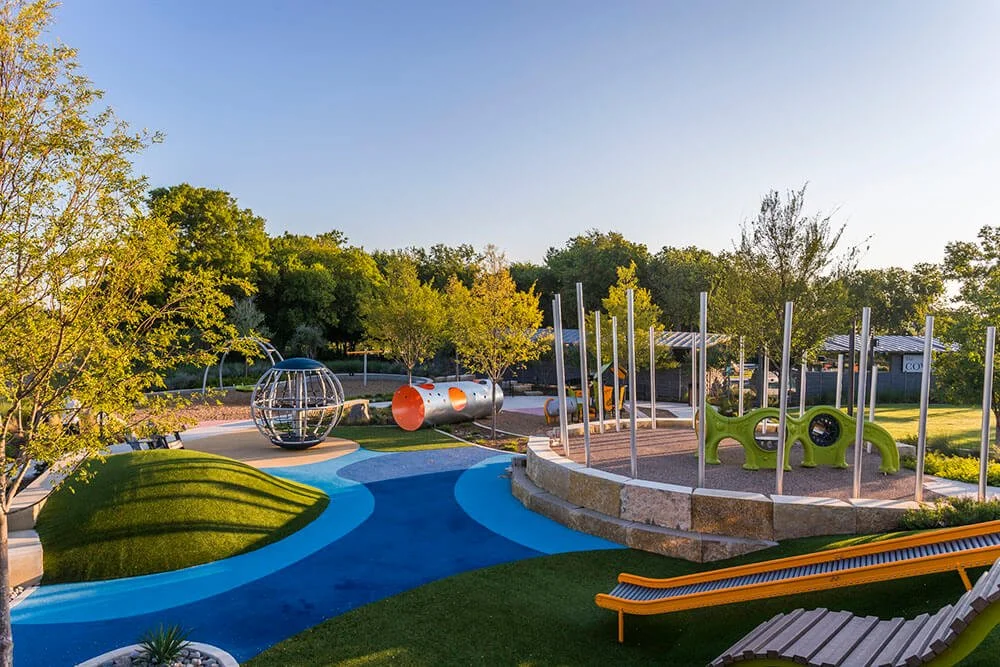My Cincy, My Parks
Increasing park use in adults through in-person and digital experiences in Cincinnati.
User Experience, User Research, In-person and Digital Campaign Design
Overview
Timeline: 3 weeks
Area of Focus: Sustainability, Community Development, Diversity, Equity and Inclusion
Solution: In-person and digital campaigns to promote Cincinnati parks and community building efforts.
Role: UI/UX Researcher and Designer (James Avant IV, Loran Sanvido and Cristelle Mathews)
Skills Developed:
Professional: User Research, Persona Development, UX and UI Research, Surveys, Interviews, Data Analysis, Data Visualization, Opportunity Mind Maps, Concept Sorting, Concept Scenarios, Design Strategy
Technical: Qualtrics, SurveyMonkey, Optimal Workshop, Miro, Tableau
Soft Skills: Collaboration, Empathy, Communication, Leadership, Problem Solving
Objective
This project was undertaken as a group research project. The aim of this project was to pick a goal out of 17 UN Sustainable Goals and propose a solution to a target area.
Goal 11: Make cities and human settlements inclusive, safe, resilient and sustainable.
Target 11.7: By 2030, provide universal access to safe, inclusive and accessible, green and public spaces, in particular for women and children, older persons and persons with disabilities.
Green spaces have been known to improve quality of life for people and communities in many ways. They promote active lifestyles, reducing the risk of cardiovascular diseases and other chronic health conditions. Green spaces have also been linked to improved cognitive functioning, attention restoration, stress reduction, emotional well-being and social relationships.
Current Park Use Trends: Although most reports have indicated a rise in green space use during the COVID-19 pandemic, some pointed out that the use of green space has become more homogeneous.
Green Spaces in Cincinnati: There’s a need for safe and equitable access to well-maintained green spaces in the city of Cincinnati. The lack of availability and awareness of spaces to gather and engage with one’s community challenges community relationships and well-being.
Today’s Cincinnati Parks constitutes more than 5,000 acres, which amounts to approximately 10 percent of the City’s total land area.
Literature Review
As a part of their primary research, the team conducted literature reviews to look into the amenities available in Cincinnati and understand upcoming trends, park use patterns and stakeholders in the community.
Research showed that the the Cincinnati Park Board has been making effort to preserve the best of the past and carry a long tradition of excellence into the future by developing master plans and collaborating with organizations to implement diverse initiatives.
Local Stakeholders:
City Government
University Faculty
Local Residents and Businesses
Non-profit Organizations
Land Owners
Urban Planners and Designers
Interviews
To understand stakeholder’s perspectives better, interviews were conducted with three stakeholders:
Flavia Maria Cunha Bastos, PhD (Professor at DAAP School of Art, University of Cincinnati)
Destinee Thomas, Marketing Manager (Cincy Nice)
Alistair Probst, Environmental Services + Greenspace Director (Keep Cincinnati Beautiful)
Key Interview Insights:
Reduce the gap between user needs and the planning and management of urban parks.
Develop lower socio-economic areas for economic growth.
Reinvent methods of policing in public spaces.
Art helps build and strengthen communities.
Create inclusive parks kids and adults of all abilities.
Adopt methods of participatory design.
Identify key assets and points of value intrinsic to a location.
Utilize urban vacant lands.
Problem Statement: How might we assist the park’s initiatives to better engage adults?
Survey
To understand the community’s needs, the team conducted a survey developed on Qualtrics. The survey received a total of 86 responses from individuals belonging to the age group of 18 to 40 years of age.
The respondents represented 21 of the 52 neighborhoods.
Ideation:
Design methods we utilized to develop concepts:
Principles to Opportunities
Opportunity Mind Map
Concept Sorting
Concept Scenarios
Proposal
My Cincy, My Parks
GOAL: Assist with the Cincinnati Park's Master Plan initiatives to better engage adults 18-40 through in-person experiences and digital experiences.
FOCUS:
In-Person Experiences:
Amenity-Focused Park Campaigns
Informational Park Signage
Digital Experiences:
Digitally Integrated Signage
Feedback Portal
In-person Experiences
AMENITY-FOCUSED PARK CAMPAIGNS:
Each park within the city has its own unique characteristics and features. Highlighting these, or introducing new amenities, can help create an identity for each park.
How it assists Cincinnati Parks’ Master Plan:
Programming & Events
Nature Recreation & Health
Connectivity
INFORMATIONAL PARK SIGNAGE
Integrating a variety of park signage creates a more welcoming environment. Visitors also become more informed of their surroundings, which adds to their connection to the world around them.
How it assists Cincinnati Parks’ Master Plan:
Environmental Education
Nature Recreation & Health
Connectivity
Digital Experiences
DIGITALLY INTEGRATED SIGNAGE
Giving visitors the power to interact with parks digitally broadens park accessibility, implements new virtual amenities, and creates a personalized park experience. The signage can also enable wayfinding strategies for the visitor.
How it assists Cincinnati Parks’ Master Plan:
Programming & Events
Nature Recreation & Health
Connectivity
Digital Experiences
FEEDBACK PORTAL
Visitor feedback is critical. The data gathered from this help maintain parks and can impact budget allocations. Our feedback portal will allow visitors to record their experiences quickly and with ease.
How it assists Cincinnati Parks’ Master Plan:
Programming & Events
Reliability, Sustainable Design, Operations & Maintenance





















